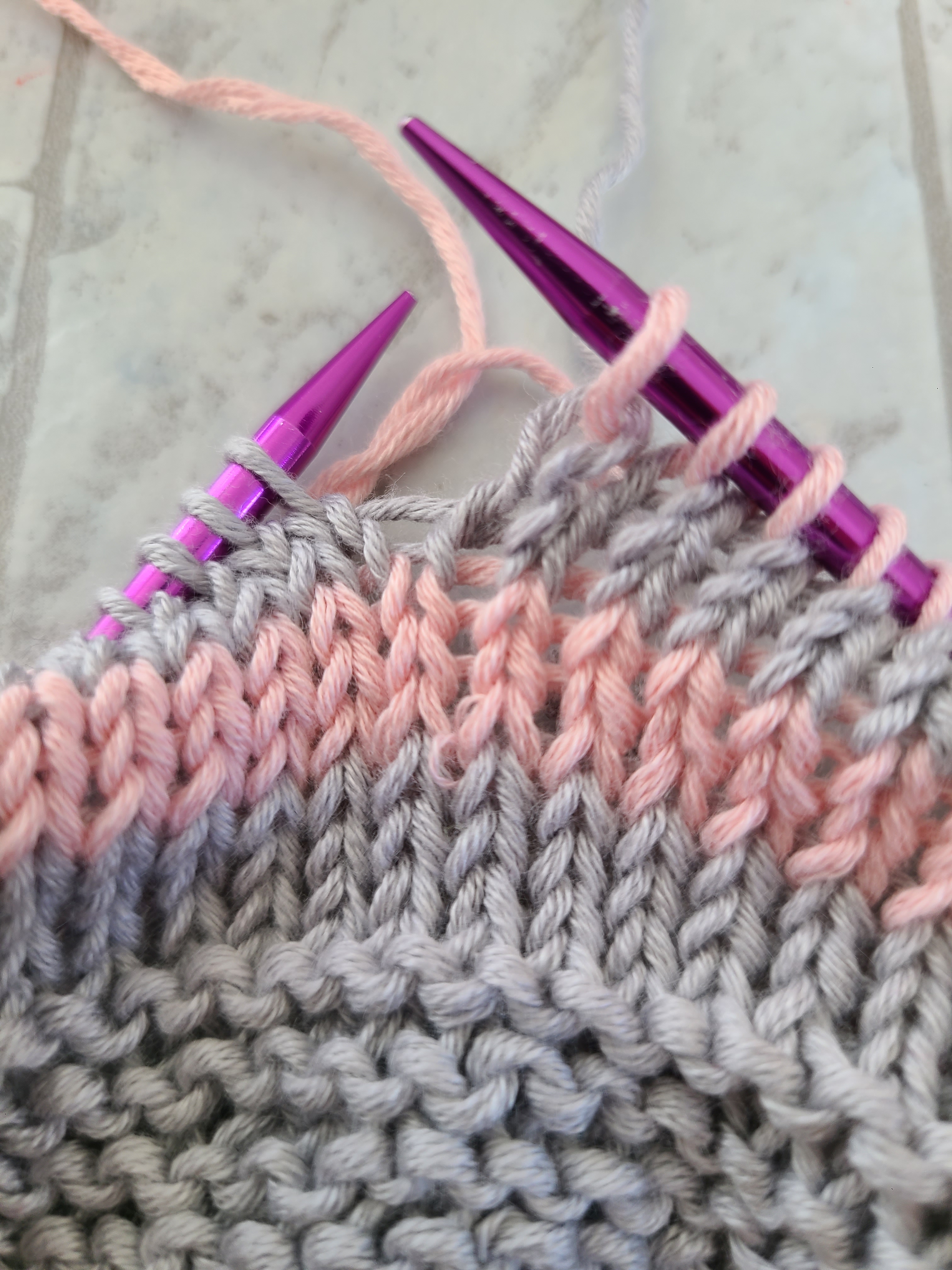Your cart is currently empty!
On Working with Splitty Yarns

How to work with those gorgeous, but splitty, yarns in your stash.
If you buy something using the links in this blog post, I may earn a small commission (these are called affiliate links). You can read The Knit McKinley’s full disclosure policy here.
As the weather here in New England starts to warm up, I find I want to work with more plant-based and warm-weather friendly fibers. Cotton, bamboo, linen, and other plant fibers in vibrant colors are perfect for knitting on sunny, spring days.
The main downside to working with a lot of plant based fibers: They can be splitty.
If you haven’t encountered a splitty yarn before, let me explain what this means. When a knitter or crocheter says a yarn is splitty, we mean that the plies or individual strands of yarn tend to separate when you’re working with them. When you’re knitting with one of these yarns, you may find the knitting needle splits the yarn, rather than smoothly picking up the whole loop. The reason crafters don’t like this is because you can end up with little loops of loose yarn on your work. This can leave weak spots in your knitting.
Splitting tends to happen with cotton and other plant based fibers because they are less elastic and tend not to stick to themselves the way wool and animal-based fibers will.

But you don’t have to skip using a yarn because it’s splitty! There are many yarns that make excellent additions to your stash and are perfect for that linen cardigan, hemp market tote, or cotton baby hat pattern you have your eye on. An example of a yarn I’ve used and would happily recommend is the yarn featured in the photos in this post. I show Lion Brand’s Coboo yarn because it’s a cotton-blend that does tend to split while knitting, but is a great yarn for hats (I’m not just picking on Coboo — I really do like and even have a knitting pattern that specifically calls for it, the Dorrance Street Hat).
When working with a splitty yarn, I have three tips that may help you out:
- Slow down and pay a little extra attention to your knitting. I’m someone who knits while watching TV or reading a book on my kindle. When knitting a splitty yarn, I will make sure I work somewhere with good (preferably natural) light and at a time I can focus on my knitting. In other words, I won’t work on projects with these yarns when I’m watching the new episode of Wanda Vision, but will for the third re-watch of the fifth season of Buffy.
- Skip the sharp knitting needles and go for a blunter tip. While my Hiya Hiya sharps are my go-to, I like to use knitting needles with a blunter tip for plant based fibers or splitty yarns. This may seem counterintuitive – wouldn’t you want the needle with the finer point? My experience is that I want a blunter tip that scoops the loosely plied yarn while pointier needles tend to split the plies of the yarn.
- And most importantly, if you see a split or loose strand in your knitting, fix it is soon as you see it. Even if you need to drop down a row or two to fix a split a mistake, I would go ahead and take the time to fix it so you aren’t left with weak spots in your knitting.
Pictured below on the left is a loop I made by not scooping up the whole yarn and leaving some loose strands out of my knit stitch (I fixed this after taking the picture!) . The picture in the middle is a comparison of the needles I’m using (Boye US 6/ 4mm, 16″ circular needles) compared to the tip of my HiyaHiya sharp needle. The picture on the left shows how the cotton-blend yarn separates slightly while working, which can lead to the strands splitting.



I think some splitty yarns are worth working with. I really have enjoyed working with cotton and plant-based yarns like Coboo and am excited about trying out some of Lion Brand’s other bamboo-based yarns: Nuboo, Truboo, and Truboo Sparkle (I wrote a little bit about my spring yarn haul with these yarns a couple days ago). All of those yarns run the risk of being splitty and I can see they are loosely plied. While I don’t know if all of these yarns will ultimately get a great yarn review from me after knitting a project, I’m excited based on my experience with the Coboo yarn to try them out.
As always, I’d love to hear your thoughts on working with splitty yarns and if the tips above help with your spring knitting projects.
Happy Knitting,
~Kara